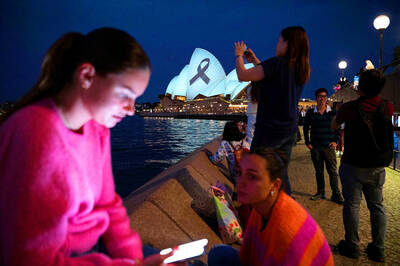A New Zealand grandmother has converted a 29-year-old wreck into a homemade, solar-powered electric vehicle, “to show it can be done.”
Rosemary Penwarden, 63, has been driving her converted vehicle around South Island roads for three years now. The project took her and a friend more than eight months of solid work and tinkering.
“You do have to be a little bit mad,” she said. “I want to thank the oil companies for the motivation.”
Penwarden bought a 1993 car body from an auto wrecker, and took the combustion engine out herself. She replaced it with a new gearbox and electric engine, then packed the front and back of the car with batteries — 24 under the hood and 56 in the trunk.
In total the project, including labor, cost Penwarden NZ$24,000 (US$15,612). The vehicle is registered and warranted. After several years on the road, her project came to the attention of local reporters.
Refrigeration engineer Hagen Bruggemann, who helped Penwarden convert the car, has now converted about eight vehicles to electric engines.
“You can talk as much as you want about all this environmental crap, but you have to implement it,” he said.
Without free labor, converting a car is not a financially viable option for most people — but there is a strong commercial argument for converting trucks and larger vehicles, where the body tends to be worth much more than the engine, he said.
Converting a diesel truck would pay off within five years, he said.
“Really, the polluters should be paying — I don’t see why they’re not,” he added.
A longtime environmental campaigner, Penwarden said the time and money she devoted to converting her car is not possible for everyone.
“I’m in a very privileged place,” she said, adding that as the world adapts to the climate crisis, she wanted to illustrate the possibility.
She charges the car at her home, which is fully solar-powered.
While Penwarden believes the car would pay for itself — she had once spent up to NZ$100 a week on gasoline for commuting — she said it was not a cost-saving exercise and called on the government to support conversions.
“Just to be able to show that it can be done is a priceless thing,” she said. “The biggest thing is to help stop the biggest polluters as soon as possible — and nothing that we can do as individuals I think matters quite as much as that.”

Republican US lawmakers on Friday criticized US President Joe Biden’s administration after sanctioned Chinese telecoms equipment giant Huawei unveiled a laptop this week powered by an Intel artificial intelligence (AI) chip. The US placed Huawei on a trade restriction list in 2019 for contravening Iran sanctions, part of a broader effort to hobble Beijing’s technological advances. Placement on the list means the company’s suppliers have to seek a special, difficult-to-obtain license before shipping to it. One such license, issued by then-US president Donald Trump’s administration, has allowed Intel to ship central processors to Huawei for use in laptops since 2020. China hardliners

Conjoined twins Lori and George Schappell, who pursued separate careers, interests and relationships during lives that defied medical expectations, died this month in Pennsylvania, funeral home officials said. They were 62. The twins, listed by Guinness World Records as the oldest living conjoined twins, died on April 7 at the Hospital of the University of Pennsylvania, obituaries posted by Leibensperger Funeral Homes of Hamburg said. The cause of death was not detailed. “When we were born, the doctors didn’t think we’d make 30, but we proved them wrong,” Lori said in an interview when they turned 50, the Philadelphia Inquirer reported. The

RAMPAGE: A Palestinian man was left dead after dozens of Israeli settlers searching for a missing 14-year-old boy stormed a village in the Israeli-occupied West Bank US President Joe Biden on Friday said he expected Iran to attack Israel “sooner, rather than later” and warned Tehran not to proceed. Asked by reporters about his message to Iran, Biden simply said: “Don’t,” underscoring Washington’s commitment to defend Israel. “We are devoted to the defense of Israel. We will support Israel. We will help defend Israel and Iran will not succeed,” he said. Biden said he would not divulge secure information, but said his expectation was that an attack could come “sooner, rather than later.” Israel braced on Friday for an attack by Iran or its proxies as warnings grew of

A prominent Christian leader has allegedly been stabbed at the altar during a Mass yesterday in southwest Sydney. Bishop Mar Mari Emmanuel was saying Mass at Christ The Good Shepherd Church in Wakeley just after 7pm when a man approached him at the altar and allegedly stabbed toward his head multiple times. A live stream of the Mass shows the congregation swarm forward toward Emmanuel before it was cut off. The church leader gained prominence during the COVID-19 pandemic, amassing a large online following, Officers attached to Fairfield City police area command attended a location on Welcome Street, Wakeley following reports a number